Electric Cars: Pollution Solution?
London and many other European cities face the prospect of a Ã?,£300 million penalty every year over bad air. Engineers say part of the solution lies with electric transport, so this week the Naked Scientists are getting under the hoods of a new generation of vehicles ranging from the first electric buses to tomorrow's supercars. Plus, news about how scientists are making objects levitate in the lab - with sound - and why there are now 3 types of "type 2" diabetes...
In this episode
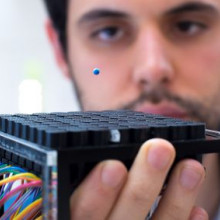
01:02 - 'Star Trek' sonic tractor beam invented
'Star Trek' sonic tractor beam invented
with Professor Bruce Drinkwater, University of Bristol
If you don't know what a tractor beam is, then you possibly didn't watch enough 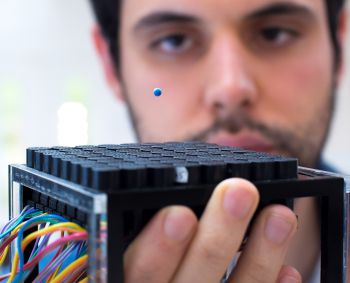 Star Trek! But - for the uninitiated - this is a way of manipulating objects at a distance, and Bristol University's Bruce Drinkwater has managed to do it using patterns of sound waves, which he fashions into a sonic "cage" in the air that can trap things. And if you move the sonic cage, whatever's inside moves with it. The discovery could make a big difference to the way we practise medicine, as Chris Smith found out...
Star Trek! But - for the uninitiated - this is a way of manipulating objects at a distance, and Bristol University's Bruce Drinkwater has managed to do it using patterns of sound waves, which he fashions into a sonic "cage" in the air that can trap things. And if you move the sonic cage, whatever's inside moves with it. The discovery could make a big difference to the way we practise medicine, as Chris Smith found out...
Bruce - We've made the world's first fully functional tractor beam. For it to be a tractor beam, it's got to be able to grab an objects from one side, so that means there's got to be a source of the energy - in our case, sound waves - it's got to travel out, it's got to grab the object, and we've got to be able to pull that object back towards the source.
Chris - Talk us through the experimental approach then. What do you do and how does it work?
Bruce - So, imagine in front of you an array of lots of little loud speakers. The array is about the size of a dinner plate basically and each of the loud speakers is about a size of your thumbnail. They're all outputting sound waves. The key for us is to carefully control the way in which those individual outputs from all those different loud speakers interfere.
So, we're creating an interference pattern. We refer to that as an acoustic hologram because it's three dimensional, though you can't see any of it, there's a three dimensional sound field there. If you could go in there and listen to it, the sound would vary in three dimensions. And so, we've carefully tuned the output of those loud speakers to create these very special conditions that produce ultimately, tractor beam effects of levitation, rotation, movement.
Chris - What frequencies in other words, what's the pitch of the sound that's coming out? Would I be able to hear it?
Bruce - No. You wouldn't be able to hear it. So, our current system is operating at 40 Kilohertz. So, your ears can hear somewhere between 15 and 20 Kilohertz depending on your age. So, we're well above that. We're in the range that bats and dogs and cats could hear. So they probably wouldn't like our experiment. But the good thing about that frequency range is it means we can use really loud sounds and yet, we still can't hear them.
Chris - The sound comes out of this ray of speakers and the different waves are interacting with each other in a way that you're carefully controlling. When they do that and they create this three dimensional holographic sound effect, this soundscape, what effect does that have then on things that are within the area of influence of that sound?
Bruce - The best way of describing this tractor beam and these trapping points is, the objects that we're levitating and trapping are at a quiet location. So, the sound level is very low and they're surrounded by a cage of high intensity sound. So if they try to move, they're pushed back by this high intensity sound.
Chris - What sorts of objects can this influence?
Bruce - Their full range isn't yet known. We've worked on a scale of millimetres. So at 40 kilohertz, the wavelength of sound in air is about a centimetre. So, we can only levitate objects that are small and about half of that. So we're up to about five millimetres so the size of a small pea.
You could scale this in either direction. You could go to both smaller scale or larger scale, which might be of more interest to sci-fi fans. Unfortunately, if you get to a larger scale then that means lower frequency which eventually means you'll be able to hear it.
Chris - What's the range? Presumably, the sound is spreading out away from the loud speaker ray and therefore, becoming weaker with distance. So, there must be a point at which it won't work anymore.
Bruce - Yeah, you're quite right. You have to achieve certain levels of sound intensity in the vicinity of the object that you're levitating. You need something like 140 and 150, perhaps higher, decibels in that locality and so yeah, as the sound propagates, so it decays.
Our system can levitate things up to about 30 centimetres away from it. If we had more powerful transducers, we could extend that. I could imagine it wouldn't be too difficult to extend it to half a metre, possibly metre.
Chris - Now, this is working in air and it relies on the fact that you're putting energy from your speakers into the air and making the air molecules vibrate which creates these areas where you've got a calm spot where the object wants to sit. If you used a different medium, for instance, if you put this into a cylinder of a very dense gas or a very light gas, would it behave differently?
Bruce - One of the nice things about acoustics is that everything scales with the wavelength. So, as long as these waves exist, these phenomenon that we're talking about exists. So, if you go to a different medium, the wavelength will change for a given frequency, but the physics doesn't actually change. So yeah, it's applicable to any medium. I'm really interested in water-like medium and in particular, tissue because I'm interested in taking this technology to manipulate objects within the human body.
Chris - You could for instance operate on someone by manipulating an object inside their body by sending these sound waves in to create guide and signals for that object from outside.
Bruce - Yeah, I think so. I think the one to go for first is targeted drug delivery. So, there's currently quite a lot of bit of work and interest in this whole area, but the idea would be, you'd encapsulate drugs in little capsules - very, very small so it could be injected - and then you could move them to the desired location with this tractor beam technology and then blast them open with a pulse of ultrasound. So, you could deliver the drugs precisely to the location within the body you wanted to.
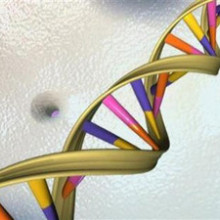
06:26 - Changes in DNA are NOT random
Changes in DNA are NOT random
with Professor Bill Amos, University of Cambridge
Cambridge has a rich history of making discoveries about DNA - the genetic code inside each and every one of us. In the 1950s, Watson and Crick announced that they had unraveled the structure of DNA - the famous double-helix shape. Now, 60 years later, another Cambridge scientist has made an important DNA discovery. This time about the way the genetic code changes or "mutates" to allow evolution to happen! Bill Amos began by explaining what a mutation was to Graihagh Jackson...
Bill - A mutation is just simply a change to the DNA. If our DNA never changed, you might think that's rather good. But of course, that isn't very good because that means you have no variability. So if a disease comes along, you won't have any variability to fight it, so you can't evolve, you can't change yourself. So you need to balance novelty through mutations but most mutations are actually harmful so you want a little bit but not too much.
Graihagh - When do these mutations happen?
Bill - Well, this is the interesting thing. Previously, until quite recently really, we weren't getting lots of DNA sequence. So we couldn't really quantify mutation rates very accurately and everybody made the perfectly understandable assumption that they just occurred at random like raindrops falling on the road. So, the assumption was that these are so random if you put out a whole load of different buckets in the road, they'd all fill up at the same rate. The really strange thing that my research seems to reveal is that due to the way chromosomes interact. In fact, variability attracts mutations. So this means if you put out a bucket that already had some water in, you'd get more rain falling in it and that's a really strange pattern.
Graihagh - So, what you're saying is, you can now predict where these mutations are going to happen within our genomes.
Bill - The less random the mutation process is, the more you can start to get handles on predicting where these mutations are going to occur. These occurs in a population, but also even in individuals and you may even have applications in looking at where mutations that predisposed cancer are more likely to occur.
Graihagh - So, it could have some really fundamental benefits I suppose to how we screen and predict for things like cancer in the future - medical implications.
Bill - It's really important to understand. I mean, more and more, as we're moving in the genomic era where everybody seems to be collecting DNA sequences from lots of organisms and huge amounts of genetic data from humans, we really are moving into the era where we can quantify very precisely where the variability lies. My research suggests that we can now use this to start predicting more accurately where mutations will occur in the future. And one of the huge benefits in terms of evolution of the sort of phenomena that I've discovered, is that it will attract more mutations towards the genes that really need to be more variable. So, if you're variable to start with, you'll attract more mutations, making you more variable and that helps you direct the mutations towards bits of the genome where they're maximally beneficial.
Graihagh - Going back to your bucket analogy where you're more likely to have all these water collecting in one bucket rather than the other two that suggests that these variations are or these mutations are happening in a cluster. Why are they happening in these hotspots?
Bill - It's the slight freak of how the DNA replication process happens. We've got two copies of each chromosome and when they come together, if there's a point in the chromosome where they differ, for example, you might get a gene from your mother with brown eyes - that codes for brown eyes and one from your father with blue eyes, that's the difference. Actually, the genome will actually recognise this is a difference. In trying to correct this difference, they tear up a bit of the DNA and relay it. It's like making a little repair job. During the repair, they might make more mistakes. So that's why they tend to occur near to each other.
Graihagh - So, what you're saying is, you can now predict where these mutations are going to happen within our genomes.
Bill - The less random the mutation process is, the more you can start to get handles on predicting where these mutations are going to occur. This occurs in a population, but also even in individuals and you may even have applications in looking at where mutations that predispose to cancer are more likely to occur.
Graihagh - So, it could have some really fundamental benefits I suppose to how we screen and predict for things like cancer in the future - medical implications.
Bill - It's really important to understand. I mean, more and more, as we're moving in the genomic era where everybody seems to be collecting DNA sequences from lots of organisms and huge amounts of genetic data from humans, we really are moving into the era where we can quantify very precisely where the variability lies. My research suggests that we can now use this to start predicting more accurately where mutations will occur in the future.

10:27 - Big data paving the way for medicine
Big data paving the way for medicine
with Dr Joel Dudley, Icahn School of Medicine in New York
This week, a new way to study diseases and the best ways to manage them has  been published in Science Translational Medicine. The work is based on what's called "big data". Put simply, as health records are translated to computer systems, opportunities are opening up to use that data to study and treat diseases in ways that we couldn't before. Joel Dudley and his colleagues are developing the medical equivalent of a social networking site for diseases. They can look for links between an individual's genes, clinical measurements and their lifestyle factors, and then plot where a person is on a "disease landscape" map and that map can reveal a wealth of new things about a person's prognosis. The team have already discovered that there are actually three different forms of type 2 diabetes, as Chris Smith found out...
been published in Science Translational Medicine. The work is based on what's called "big data". Put simply, as health records are translated to computer systems, opportunities are opening up to use that data to study and treat diseases in ways that we couldn't before. Joel Dudley and his colleagues are developing the medical equivalent of a social networking site for diseases. They can look for links between an individual's genes, clinical measurements and their lifestyle factors, and then plot where a person is on a "disease landscape" map and that map can reveal a wealth of new things about a person's prognosis. The team have already discovered that there are actually three different forms of type 2 diabetes, as Chris Smith found out...
Joel - The overall goal of the study was really to start to realise this idea of precision medicine which is a big term at least in the US where President Obama mentioned it in his State of the Union which is taking a new look at medicine with the very data rich lands. We have things like genetics and electronic health records, and things like that and can we really take a new look at medicine and disease and understand it with those greater precision. That's what we're trying to implement here. The approach we took actually borrowed some ideas from social networking. We represented each patient by all the pieces of information we had on them in the health records for example blood tests and height, and weight, and things like that and we connected patients up in a network. An analogy in the social networking would be if people have the same friends or the same interests in movies or books, you would say they're more closely connected in a social network. That allowed us to sort of map out the whole clinical network if you will of the patient population on Mt. Sinai which really in effect represented a map and allowed us to really start to understand almost like Google maps like, "where is your GPS data on this map and where do you fit in this patient population and where people have various diseases?"
Chris - Well, let's consider the diabetic side of it first because that was the thing you used as your example here. What emerged when you started to draw together these trends in all people who were judged to have type 2 diabetes?
Joel - As you may know, diabetes is a big health concern worldwide but especially here in the United States and then here in New York. So, we focused on diabetes initially. When we built this map, the question we asked is, "Where are the patients with type 2 diabetes? Where do they live in this map?" What we found in fact is that there were three distinct subgroups that were emerging in the data and we're able to show that the differences between these groups were clinically meaningful. So for example, all type 2 diabetics have increased risk of cardiovascular complications. But there's one group in our result that actually had increased risk even relative to type 2 diabetics. Another interesting group was the group that had increased cancer risk.
Chris - One can therefore presuppose that what we used to regard as a single condition may actually be more than one disease. If you can group them like this, does that mean then that not just their risk of certain disease complications but their likelihood of responding to certain treatments is going to be different? So, by being able to analyse them in more detail, we can give better prognostic and diagnostic, and treatment to each group individually.
Joel - That's absolutely the goal and the opportunity. So, I would like to point out, we had genetics on these individuals as well. So, we're even able to find genetic factors that were unique to each group. Those genetic factors are also important because they might give us an opportunity to serve as biomarkers for example. So, if you were a newly diagnosed diabetic, the opportunity could be that, now these genetic factors allow us to say, "Okay, well you're actually maybe a type 4 diabetic" in the future if it turns out that there is that many types of diabetes. And while we're worried about cancer for all diabetes patients but now, these genetic factors may be indicating that we should screen you much more frequently.
Chris - That's diabetes. Does the technique though mean that you could take the same strategy and apply this to a full constellation of illnesses?
Joel - Absolutely. We're excited about this study because the approach is generalizable. So, it wasn't designed to only study type 2 diabetes. It could be used to study any common complex disease that has many factors. It could be rheumatoid arthritis, multiple sclerosis and cancer. Countries such as Denmark or even the UK and National Health Service where you have such huge volumes of data really collected and centralised, we have huge opportunities to apply these methods. And hopefully, these maps will continue to get better because we can incorporate information such as digital health and wearables, and data coming from apps. I think eventually in the future, we will have a much, much higher resolution and maybe get to the point where we have a tool that's sort of like Google maps for health and for complex, and chronic diseases.
Chris - And for the people who have diabetes who you've considered here, are there any immediate repercussions for your average type 2 diabetic based on what you've discovered?
Joel - With research, once we've discovered something, we got to test it and test it again, and then make sure it's real and the next step here is to do a prospective study where we're really designing a study to replicate these findings, and the methods are quite scalable. So, we could even join forces with other health centres to really test this at a much larger scale and hopefully, translate these findings and to improve diabetes care more rapidly.

16:04 - Could Saturn's Enceladus harbour life?
Could Saturn's Enceladus harbour life?
with Professor David Rothery, Open University
Saturn has a tiny moon called Enceladus, which is very mysterious: it's frozen solid on the surface, but has a warm internal ocean that periodically spurts plumes of ice particles out into space. Now researchers modelling the chemistry of these plumes have worked out what Enceladus is made of, and it has some intriguing opportunities for life. Planetary geologist David Rothery, from the Open University, has been taking a look at the results with Graihagh Jackson...
on the surface, but has a warm internal ocean that periodically spurts plumes of ice particles out into space. Now researchers modelling the chemistry of these plumes have worked out what Enceladus is made of, and it has some intriguing opportunities for life. Planetary geologist David Rothery, from the Open University, has been taking a look at the results with Graihagh Jackson...
David - What's in the paper is a series of experiments taking alkaline, saline water such as we think the internal ocean of Enceladus will be and letting it circulate through powdered rock samples. They tried it through carbonaceous chondrite material which is the most primitive form of meteorite and some other kinds of rock. Really, what the chemistry that was coming out into the water that had passed through carbonaceous chondrite was most similar to what's found in the plume. So, they're suggesting that the core of Enceladus is like a primitive meteoritic material. That means it hasn't melted and produced more evolved kinds of rocks.
Graihagh - Was there anything else interesting that this paper highlighted?
David - Well, the paper suggests that there should be quite a lot of molecular hydrogen. That's the H2 molecule produced. This is because of hydration reactions between the water and the rocky material. This is just dissolved hydrogen gas which should be in the water that's venting out of these hot vents on the floor of Enceladus's ocean. And because samples of the ocean are being sprayed out into space, we should be seeing H2 as well as the other things that we've already seen. This is going to be tested when we get the results of last Wednesday's flyby through the plumes by the Cassini probe because that passed at 49 kilometres above the surface of Enceladus, a really low flyby. The results when we get them in a week or two from Cassini show molecular hydrogen in these plumes as well, that will give us greater confidence in the results from this newly published study. And if there is hydrogen there, that's very exciting for people that are trying to look for habitats for life because if you've got hydrogen coming out of the hot vent then that's something that microbes can use to power their metabolism as they do on the floor of our own ocean.
Graihagh - That would be a pretty exciting discovery indeed.
David - It would. We're not going to find life. All we will do would be confirm a viable habitat for life.
Graihagh - So, in the next coming weeks, you might be able to confirm whether there's hydrogen there, but are we likely to know whether there's life anytime soon, perhaps in some future missions?
David - We do need a future mission - one that's got a mass spectrometer that will be able to measure and analyse large organic molecules of which there should be traces in the plumes. If there are microbes living on the floor of Enceladus's ocean, some will get caught up in this spray which is vented to space and we'll be able to study those.
Graihagh - So, we've got to sit tight for perhaps a decade for more. I feel like all the attention has really been on Mars when it comes to finding microbial life within our Solar System.
David - Yes. Rightly so, Mars is closer to us but to get at the life on Mars, you have to land at the surface which we can achieve. We know we can do that, but Enceladus, you don't have to land. You can fly through the plumes and if there's life there, you'll be flying through a spray of dead life. It's easier to collect at Enceladus. So, we shouldn't cease to look at Enceladus just because we're also looking at Mars.
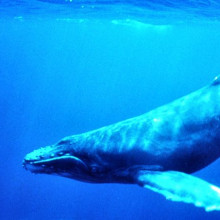
20:06 - Missing mega-poop causes nutrient crisis
Missing mega-poop causes nutrient crisis
with Dr Chris Doughty, University of Oxford
In the past, much of the world resembled an African savannah, dominated by 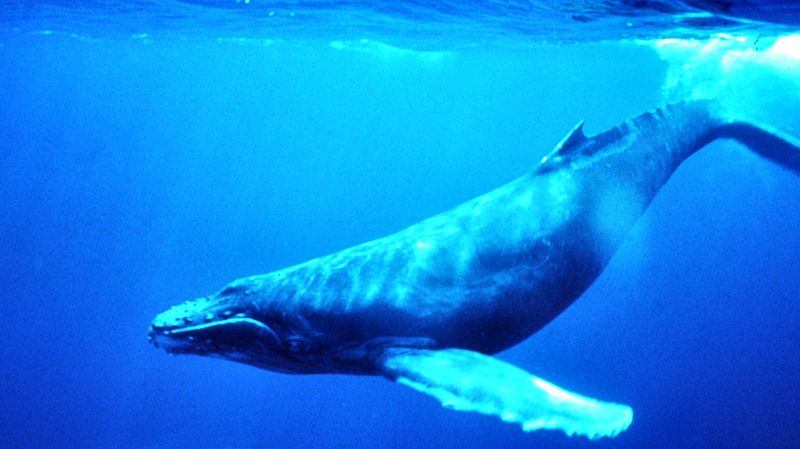 large free-roaming animals known collectively as megafauna. And size is important, because large animals like these played a key role in redistributing nutrients around their environment in their droppings. The same was true in the oceans. But now that many of these animals are extinct, the planet may be facing a nutrient crisis, as Oxford University's Chris Doughty explained to Rosalind Davis.
large free-roaming animals known collectively as megafauna. And size is important, because large animals like these played a key role in redistributing nutrients around their environment in their droppings. The same was true in the oceans. But now that many of these animals are extinct, the planet may be facing a nutrient crisis, as Oxford University's Chris Doughty explained to Rosalind Davis.
Chris D. - Large animals don't necessarily eat more than all the small animals in an area, but they do move a lot more. And so, they're really important for this process of transporting nutrients from point A to point B. and so right now, the world we find ourselves in, you have lots of concentration gradients and nutrients. So you have places with lots of nutrients and places with very nutrients. However in the past, we think that nutrients are much more evenly distributed both in land and in the ocean.
Rosalind - What did you see in your marine investigations?
Chris D. - Marine mammals and especially whales because of their large size are really important in redistributing nutrients both horizontally but more importantly, they redistribute the nutrients vertically. So they tend to feed at depth around 100 metres or so and then go to the surface where they need to breath and tend to redistribute these nutrients in the surface waters.
This is actually a really key point because normally, nutrient cycling occurs where you have nutrients flowing from mountain tops to the ocean bottoms. That's basically following gravity but what we showed in this paper is that mammals like whales, they actually can move nutrients against gravity. So basically, restoring nutrients to the land surface. We showed that in the past, this redistribution process was actually quite important and it's less than 10 per cent of what it formerly was.
Rosalind - Wow! Less than 10 per cent so it's actually gone in quite steep decline?
Chris D. - That's right and that's basically due to just population declines in whales, marine mammals, seabirds, and migratory fish.
Rosalind - Is there anything that we can do to solve this problem?
Chris D. - If we want to restore animal population, just stop hunting them and eventually, they'll come back. On land, it's a bit trickier because we're facing an ever more crowded planet. We can think about redesigning our pasture systems to kind of replicate natural systems. We have more biodiverse, fenceless pasture systems and then we could start to see an increase of nutrient fluxes as we hypothesise existed in the past.
Rosalind - And so, are we seeing sort of a decline in plant quality associated with the decline in nutrient content?
Chris D. - That's what we would hypothesise. Lots of ecosystems, especially tropical ecosystems are phosphorus limited. By that, we mean if you added more phosphorus, these plants would tend to grow faster. If the plants aren't as productive because there's less phosphorus that means there's going to be less fruitavailable for animals. And so, it basically has these cascading effects.
Rosalind - Is it just phosphorus or are there other nutrients in the cycle that are on the decline as well?
Chris D. - No. It's actually other nutrients also. I focus on phosphorus because phosphorus is one of these elements that are distributed by the animals that's really key to both plant life, animal life and human life because we need it for our fertilisers.
Easily accessible mined phosphorus may run out in as little as 50 years. And so the question is, what do we do in 50 years when we no longer have cheap phosphorus? Maybe we could kind of try to restore this natural system of recycling phosphorus that has existed in the past.
Rosalind - So, our plants in the UK would be much more healthy if we still had elephants roaming the land?
Chris D. - That's right. So basically, large animals are specifically important because they can move these nutrients over vast distances. It's quite interesting. Most people don't realise it but megafauna were once globally abundant.
A lot of people confuse megafauna with dinosaurs, but megafauna are mammals that co-evolved with our current ecosystems and actually, probably would still be here if human hunting and climate change hadn't caused their extinction. These animals were globally abundant. Without them, there was a vast decrease in what we would expect in fertility.

24:26 - Dishing the dirt on pollution
Dishing the dirt on pollution
with Matthew Pencharz, Deputy Mayor, Greater London Authority
We've known for some time that air pollution has a negative impact on our health,  and cities worldwide are now coming under increasing pressure to clean up their acts. London is one of them. The UK capital is now facing fines from the European Commission of £300 million per year for failing to meet required clean air standards for gases like oxides of nitrogen - NO2 - and particulates which are known to harm health. Charis Lestrange went to the Greater London Authority to speak with Deputy Mayor for Environment and Energy Matthew Pencharz to find out the scale of the problem...
and cities worldwide are now coming under increasing pressure to clean up their acts. London is one of them. The UK capital is now facing fines from the European Commission of £300 million per year for failing to meet required clean air standards for gases like oxides of nitrogen - NO2 - and particulates which are known to harm health. Charis Lestrange went to the Greater London Authority to speak with Deputy Mayor for Environment and Energy Matthew Pencharz to find out the scale of the problem...
Matthew - I'm not going to sit here and say that London is not a congested city because clearly, it is a congested city. But when you think about population rise we've seen, huge economic growth and yet, we've been relocated a lot space space away from cars to buses in the first instance and more recently to bicycles.
Charis - Obviously, air pollution is something that's a huge problem at the moment. How does London compare to other big cities in the world?
Matthew - Well, as in most major cities and certainly European cities too, so developed cities, air pollution, air quality is certainly a challenge. But we're actually doing relatively well compared to most of the world's cities. If you measure it by health impact, among 36 of the world's biggest cities, we do come 9th. Obviously that's not good enough, but I think it does show you sort of where we sit in the world and the fact that we are making some progress there.
Charis - So, is it true there's a potential that London could be fined for the amount air pollution it has at the moment?
Matthew - So it's worth saying that we're hardly alone in this. In fact, the great majority of EU States have failed to comply NO2 compliances. But the commission started infraction proceedings against our government and it is worth saying that the VW scandal, where a car company has been shown to be cheating on their emission standards. It kind of shows you parts of some of the blame lies here in that we've seen shifts to diesel cars and those diesel cars are not clean as we've been promised. Which is why cities such as London, other big ones in England and the UK, and also, on the continent are sort of fighting a battle with one hand tied on their back because one of the biggest tools we have is a clean car fleet, vehicle fleet. If those vehicles continue to be not performing at what we've been told they were going to perform, you can see the obvious difficulties there.
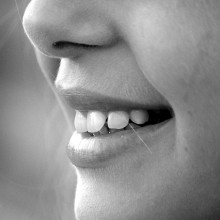
26:52 - Is city air bad for your health?
Is city air bad for your health?
with Dr Ben Barratt, King's College London
Regardless of the source, pollution is a serious problem, especially when it comes  to our health. So to what extent are we being exposed and what might the risks be? Ben Barratt is a researcher at King's College London who's using cutting edge technology to measure what we breathe in and Graihagh Jackson took it out to see exactly what she breathes in...
to our health. So to what extent are we being exposed and what might the risks be? Ben Barratt is a researcher at King's College London who's using cutting edge technology to measure what we breathe in and Graihagh Jackson took it out to see exactly what she breathes in...
Ben - This is called a micro-aethalometer which is a fancy name for a diesel emissions monitor. So, it sucks air in through a tube which mimics your breathing onto a filter and it monitors how black that filter gets as a measure of black carbon. Black carbon is emitted through any combustion process but in cities, it's from vehicles - principally, diesel vehicles.
Graihagh - And that will give an indication of how much I am inhaling as I walk around the streets of London.
Ben - Yes. It takes a reading every few seconds and we'll couple it with a GPS watch so you can see where you are which really visualises the pollution as you walk around.
Graihagh - I should just say it's bright blue. It's a bit bigger than the size of my palm and then it has a rubber tube at the top with a clip which I imagine I'm going to attach somewhere on my blazer.
Ben - So as you say, if you could clip that to your lapel, so that's GPS watch switched on as well. You could put that on your wrist.
Graihagh - I feel like a child being dressed. It's all these pesky radio equipment I've got to carry.
Ben - I like to think of myself more as a doctor than a nursery teacher.
Graihagh - Fully equipped, I hit the streets and I really wanted to put Ben's gear to the test so I pootled along busy roads, swaggered along the river to Big Ben, and then to really give him a run for his money, I got into a black cab.
I literally just want to go to Waterloo.
When I got back to King's College, I've been out for a full hour. Ben loaded the data onto his computer and...
Ben - I've pulled up a map. I've combined the GPS data with your pollution monitoring data and here's a map of your last walk around London. I can see you leaving outside our building, walking along the river for a little while and the levels were really quite low. Then you hit the bridge at Westminster and then something happened and levels shot up. On this map, I can see levels going from a nice yellow to deep red which is not good.
Graihagh - Sort of like a traffic light system. Interestingly, those red sections are actually where I got into a taxi.
Ben - Right. I guessed that's what you'd done because when someone gets into a car and taxis are particularly bad, levels do tend to shoot up quite a lot. Now, if you look at time series of your results we can see these nice low levels along the river, 1, 2 micrograms and then it shoots up. So we've gone from 2 or 3 up to 35 to 40 micrograms. So that's 10 times higher during that taxi journey than afterwards.
Graihagh - That's really surprising because you would've thought being in a taxi, you are more protected from your environment and the air pollution.
Ben - Yes. People assume that inside their little protective box whether it's a car or a taxi, they're protected from the pollution outside but actually, when you think about it, you're sitting right amongst the source of pollution which is those vehicle exhaust and it's coming straight out of the exhaust, in through the air vent of the car, and into the cab of the car itself.
Graihagh - This was measuring black carbon. Specifically, how is that affecting me when I breathe it in? what effect is that having on my body?
Ben - Well in some ways, black carbon is acting as a tracer for vehicle emissions or diesel vehicle emissions in particular. We're still researching what are the components which are most harmful or toxic to health. But there's a mixture of particles, liquids, gases, all of which that come in this cloud of pollutions some of which are coated. So, some of it will be oxidising metals which can attack the lining of the lung. Some of them will be hydrocarbons which are carcinogenic. So, there's a real pea soup of all sorts of chemicals and compounds in there. And then if it gets into your bloodstream, if they're small enough, then that travels around to all of your organs - brain, heart and so on.
Graihagh - And I imagine that changes short term and also long term exposure if I live in London.
Ben - Yes. It's this discovery which has really highlighted the problem that we've got with air pollution, the idea that these pollutants can get into the bloodstream. So air pollution is now linked to cardiovascular effects, cognitive effects, cancers, and so on because you're right. As soon as it gets into the bloodstream, it can get anywhere in the body. There are both long term and short term effects. So, these particles will accumulate over time and have a slow impact on your body - reduced lung growth, cardiovascular problems, and so on. But people who are already susceptible because they've developed some kind of health condition will be affected in the short term. So they may have an exacerbation whether it's an asthma attack or COPD attack or even heart attack.
Graihagh - This is all really frightening.
Ben - It is frightening and what's really striking about it is this is a major public health challenge. But the level of understanding is low compared to other public challenges such as obesity, water quality, smoking, and so on. So, the public needs much more information about the nature of the problem, how they can afford it, and then there'll be more pressure on politicians and policy makers to help clean up the problem.
Graihagh - Obviously, the long term solution is to get rid of pollution altogether in cities. In the short term, what can I be doing? I'm a cyclist so I'm thinking, should I be wearing one of those masks?
Ben - You've seen yourself from your own data, getting into a car is not the way to protect yourself. An active travel is so good for you in so many different ways. So, there's a clear lesson to be learned there about the benefits of walking on quiet roads compared to the risks involved in getting a taxi in London or any other city in the UK.
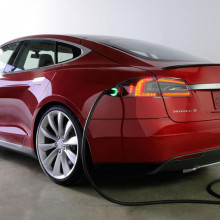
33:11 - Are electric cars up to scratch?
Are electric cars up to scratch?
with Peter Cowley, Tech Investor
One solution to the urban pollution problem is to switch to electric vehicles. But 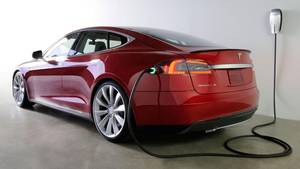 what's the state of the technology and is the market ready for such a gear change? Peter Cowley invests in these technologies so he's been investigating their potential...
what's the state of the technology and is the market ready for such a gear change? Peter Cowley invests in these technologies so he's been investigating their potential...
Peter - The difference primarily of course is the drive train itself or the source of the energy, which for a petrol engine of course is a rotary engine which is generating from petrol And for electric, it's taking some battery source where it could be a chemical battery , it could be a fly wheel for regenerative, or it could be a capacitor and turning that into power which then drives the wheels. That's the main difference. The rest of the car, it remains basically the same.
Chris - To get the market to embrace this technology, there has to be easy provision of power and charging. If you look across just the UK at the moment, what does that look like in terms of provision of top ups?
Peter - Well, I have one at home which was subsidised by the government and there are a number around Cambridge. The smaller chargers, I think they're around about 10,000 in the UK at the moment. Most of those will be on people's private drives.
Chris - What about how long it takes to charge them up though because people don't want to spend years living at motorway service stations waiting for their cars to charge? They want to get from A to B as quickly as they can. So how long can these cars take or how long do they take to charge?
Peter - It's an interesting figure here. If I charge mine at home, which is not a 13 amp socket, but the one up, it charges at about 10 miles extra range per hour. However, if you charge them with one of these superchargers which Tesla have, you're charging it about 200 miles per hour. So for most people, it's just charging overnight, you're charging at work, it won't make any difference. It's only if you say, if you want to stop off on the way.
Chris - The thing that will determine whether a product is embraced by the market though, must be the cost effectiveness. So, when you work out the price in terms of buying the vehicle and then the price per mile travelled, what do the numbers look like?
Peter - At the moment, it costs me about 2 pence a mile on battery and it costs me about 12p a mile on petrol. Therefore, I got about 10p or so difference. In principle electric vehicles should be cheaper. At the moment, there's a government subsidy of exactly 5,000 pounds per car. So, I guess, the breakeven on electric vehicle is within the lifetime of using it sort of 6 to 7 years.
Chris - Now, cynics would say that are we not just pushing all the pollution into the countryside because you need a coal fired power station churning out current to charge up your electric cars. So instead of the pollution congregating in London, it's just bellowing out in Oxfordshire or something.
Peter - Yeah. They call it the long tail pipe. This is the tail pipe going back to the point of production. Two or three things saying, one, the particular pollution of course is ending up in the atmosphere, a long way from where the people are wondering around down Oxford Street. So, that's actually in a better place. But what the generation of this depends very much on the mix of energy whether it comes from renewables or not. In fact, funny enough, Paraguay is the best place to be in the world for this because almost all of it comes from hydroelectric. Australia and India are the worst. It's probably more efficiently produced as well. So in fact, you're moving the pollution away and you're producing less pollution. The other fact to take into account is the pollution generated by building the battery and recycling it because that is more than it would be for a petrol engine. So if you take the cradle to grave figure, it becomes a lot less exciting than if you're just taking the usage figure.
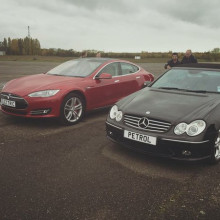
36:35 - Electric vs Petrol: Who will win?
Electric vs Petrol: Who will win?
with Waseem Mirza, BBC reporter
There's only one way to see what would win in a race and that's by staging a time trial. Thanks to BBC reporter Waseem Mirza, Graihagh Jackson and Chris Smith managed to do exactly that...
trial. Thanks to BBC reporter Waseem Mirza, Graihagh Jackson and Chris Smith managed to do exactly that...
Waseem - This is a Tesla model SP85 and it is completely electric. I have the opportunity to really give this a go because I won it in a competition. So, here we are, pitting this car against the best of the old generation of technology, the gasoline fuelled vehicle known as the Mercedes AMG CLK 55. Who will be the winner? I think I know who will be but let's see what Chris thinks.
Graihagh - Chris?
Chris - We're going to win. We should be clear shouldn't we? Waseem is going to drive the electric car and we're going to take the petrol. I expect actually that Waseem will be faster away from the blocks but I reckon we can beat him in terms of our ultimate speed and range.
Graihagh - I mean, I think you guys should place a bet. Fiver? who's in?
Chris - I'm in.
Waseem - Fiver.
Chris - I'll see your fiver and I'll rate your fiver and a go of your electric car.
Waseem - Absolutely.
Graihagh - How was it? How do you think you did?
Chris - That was exhilarating with a capital E. I've never driven that fast ever.
Graihagh - Do you think it was enough to beat the Tesla though?
Chris - I'm quietly confident, but that's pretty good technology over there so it could go either way.
Graihagh - We're yet to get the results Waseem but how do you think you faired?
Waseem - I think that the Tesla has quite clearly won.
Graihagh - Chris, what do you reckon?
Chris - I'm pretty confident that we did okay. Whether or not we actually beat him, I don't know.
Graihagh - Well, we'll wait and see what the data shows and then we'll work out who owes who what then.
Waseem - Okay, that's fine with me.
Chris - Hope you're feeling rich Waseem!
Graihagh - Unfortunately, we're not top gear and our data were inconclusive. So it seems as though Waseem and Chris, you've got out slightly on this one. Now Waseem, if we ignore our data as only we can, what do the specs say? Who would've won, the Tesla or the Merc?
Waseem - Well it's quite really. According to the specs, the Tesla should be out in the lead because on paper, it has a 0-60 time of 4.2 seconds. It is quite a fair test because the Mercedes is also rear wheel driven. Yet, it's 0 to 60 time on paper, it's 5.4 seconds. So, there is quite a big gap there.
Graihagh - Yeah, a second. Peter, you're looking a little sceptical over there.
Peter - Well, I was wondering what the noise was when they were taking off. I assume it's because you're on the runway somewhere. Now, I am sceptical. As we discussed earlier, but I have driven a Tesla and didn't overall think it was something I would want to buy. That doesn't mean necessarily, I wouldn't buy one of course.
Graihagh - Waseem...
Waseem - So, I understand that was an older generation of the Tesla and it's amazing to look how far things have moved on in only a relatively short period of time. You've got bigger battery packs now being put in these vehicles and that presumably gives access to greater power and longer ranges. Certainly, in the week that I had this car, I experienced great amount of enjoyment. The torque was unbelievable and that's coming from somebody who is an electric car driver already. It struck me, going back to my own car, that I was convinced for a period of time that something is wrong with my car. Of course, it wasn't. it was just an amazing experience with the Tesla.
Graihagh - Now Waseem, it wasn't all bells and whistles because you did run into a bit of a difficulty when getting to the race itself.
Waseem - Yes, umm... Knowing that I had used the car at highway speeds, I wanted to be doubly sure that we had enough range. As it happened, I was delayed by 30 minutes getting on to the airfield.
Graihagh - You left us all in the rain Waseem.
Waseem - Absolutely. It was a quite cold morning as well.
Graihagh - It was really cold.
Waseem - And of course, that doesn't help batteries at the moment either, unless...
Chris - Waseem, is this a very long winded way of saying you were late because you ran out of juice?
Waseem - Well, partly it's true but that's not the whole story. I mean, it would've been a poor test had we ran out on the airfield after doing our time trials. That would've been a disaster because we would've needed a flatbed recovery from that deserted airfield in the middle of nowhere which would've been a real big challenge so I wanted to prevent that. Thankfully, we got away with it I think.
Graihagh - Thank you very much. BBC reporter Waseem Mazir. If you want to see our track test, we posted the video on our Facebook page, Facebook.com/thenakedscientists.
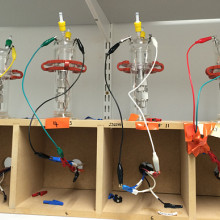
41:30 - Lithium-air: big battery breakthrough
Lithium-air: big battery breakthrough
with Professor Clare Grey, University of Cambridge
One problem with current electric cars is the range. This all boils down to storing 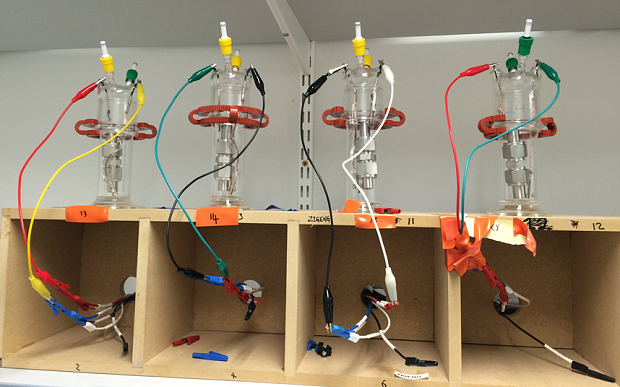 energy, and the present hold up is the battery technology we're relying on. Now that could be about to change thanks a new discovery from Cambridge University's Clare Grey who's a world leading expert in the art of making better batteries, as she revealed to Chris Smith...
energy, and the present hold up is the battery technology we're relying on. Now that could be about to change thanks a new discovery from Cambridge University's Clare Grey who's a world leading expert in the art of making better batteries, as she revealed to Chris Smith...
Clare - The heart of the battery is very much the two different materials that make up the electrodes and actually, store the energy. So, one of them is called the positive and one of them is called the negative. The positive electrode contains a material called lithium cobalt oxide and that contains layers of lithium, cobalt and oxygen, and the negative is made up of graphite. So that's the same material that's in pencils.
So, when you put it together, you have your lithium cobalt oxide, and your graphite, and that's the battery that's been around for 25 years. It's in our mobile phones and it's in our laptops. It's really sort of kicked off the whole portable electronics revolution.
Chris - So, it's sort of based chemically on the fact that you have two chemicals and one wants to give away electrons - negative charges - the other chemical wants to soak them up in some way by a chemical reaction happening and we can tap off those surplus electrons and send them around a circuit before allowing it to complete that journey.
Clare - That's right and work and do some load.
Chris - So, what's the problem with the present generation then of car batteries like the electric car that Waseem had that went flat on him? Why are the batteries not better?
Clare - Well, there were multiple problems but the biggest one is that the amount of electrons and the energy density. So the energy density is the voltage times the number of electrons you can get out of them is limited by the weight of the material and the type of material. And so, that's problem number one. Problem number two is it's difficult to charge and discharge the batteries multiple times. So, you're used to your mobile phone batteries lasting for a couple of years if you're lucky.
But you want your car batteries last for 7 or 10 years because it's so expensive. And so, what's happening in these batteries is the lithiums are moving backwards and forwards from our lithium cobalt oxide to our graphite. And we're expecting these materials not to change but they will eventually do that.
Chris - I suppose it's a bit like, if I keep shoving a key and a lock and pulling it out again, eventually, the lock wears and the key gets loosen the lock and it's sort of similar with your battery architecture.
Clare - Yes and the other problem also is that - so, if I put my battery together, it wouldn't work because I got lithium cobalt oxide, and graphite. They're not oxidised and reduced. So, what I need to do is I needed to charge them so I have to put them on my charger. And then I make very reactive materials and then those reactive materials can react with other components in the battery like the electrolytes. So, the electrolyte is the liquid that allows the lithium ions to move backwards and forwards.
And so overtime, all of these reactions create side products and they eat out lithium and gradually, the capacity dies. And so, that's one of the major reasons your battery and your cell phone is dying is because of these side reactions.
Chris - And the research that you're announcing this week that may help to solve this problem, what is that and how does it work?
Clare - So it's a very different chemistry and I should stress there's a lot of work globally on this type of chemistry and it's called a lithium air battery. So, it's a battery where lithium reacts with oxygen in the air and that has the same theoretical energy densities as gasoline or it approaches it. So in gasoline is an amazing material because you're storing energy between the CC, the carbon bonds in these carbon hydrogen bonds. So, it's been very difficult to get to the same energy density.
But because you're reacting lithium and oxygen, and both of those are very light, if we could get that to work, it's the so-called ultimate battery chemistry. So, people have been able to make a lot of progress on this chemistry, but it's been very difficult to get the reaction of lithium peroxide and back to oxygen reversibly.
Chris - And have you managed to solve that?
Clare - We have done something quite different. What we've shown is that if we add an extra chemical, in this case, it's lithium iodide - instead of forming lithium peroxide, we actually form lithium hydroxide. And so now, it's a reaction of lithium plus water and oxygen to form the lithium hydroxide and we can reversibly do this for multiple cycles. And so, our batteries have been out there for months, cycling backwards and forwards.
What's really interesting about the new chemistry is that it's got water in it. And so, what we're doing is we're getting one step closer to what we really want and that's the lithium air battery.
So, we want a battery than can breathe the same air that we have although we all breathe that contains oxygen, nitrogen, carbon dioxide and water. Our battery for the first time actually tolerated the water.

46:10 - Hybrid buses are coming to London...
Hybrid buses are coming to London...
with Alex Schey, Vantage Power
Battery technology may well be advancing in leaps and bounds, but the majority  of the rolling stock on the world's roads are traditionally powered vehicles. So what can we do while those vehicles are still in service? One solution could be to go half way - an electric motor that's powered by diesel - in other words, a hybrid. Alex Schey is the CEO and co-founder of Vantage Power - a company retrofitting buses with hybrid diesel engines that dramatically reduce emissions. Charis Lestrange went to hear how...
of the rolling stock on the world's roads are traditionally powered vehicles. So what can we do while those vehicles are still in service? One solution could be to go half way - an electric motor that's powered by diesel - in other words, a hybrid. Alex Schey is the CEO and co-founder of Vantage Power - a company retrofitting buses with hybrid diesel engines that dramatically reduce emissions. Charis Lestrange went to hear how...
Alex - From the exterior, nothing is different about this bus. It is a double-decker bus. It's when you get under the skin that things have changed quite substantially. What used to be a big diesel engine and a big gear box, and lots of chunky metal, all of that has been removed and our hybrid power train has been retrofitted into where the engine used to be. So, it is a diesel bus converted to hybrid power.
Charis - Could you explain a bit about what you've done under the hood I suppose?
Alex - If you look in the back of a normal bus, you typically see a big engine, 6.9 to 9 litres for the techies among you, and that's mated to a gear box which in itself weighs about half a ton. And you have a lot of other components around that: cooling packs, auxiliary components, things of that nature. Every single part of that has been removed and by the end of that, you end up with a big, empty engine bay and big discernible features such as engine mounting points. We have a self-contained hybrid so it's fully pre-assembled. The bus gets lifted in the air on some bus lifts and dropped down over the hybrid system and that hybrid system bolts into all the existing engine mounting points and all of the systems in the bus that we don't touch, so pneumatics for your breaking and suspension, hydraulics for your power steering, and alternators for your electrical load.
Charis - One of the main problems with electric vehicles tends to be the batteries that are used, they tend to die as we're driving them and so on. How does this hybrid overcome that problem?
Alex - So, a hybrid typically merges an internal combustion engine, which uses fuel as its energy source, with an electric system of some kind. Our system is what's called a series hybrid system, which essentially is an electric bus. It works much like you might have an electric remote control car. You have a big battery and it feeds an electric motor and off it drives. But that battery is only sufficient to drive the bus for somewhere between 4 and 10 kilometres which is not sufficient for normal use. And this is when we bring in the internal combustion side. Our engine is completely disconnected from the wheels. It can go at any speed even when the bus is stationary or it could be off when the bus is going fast. And that engine just serves to generate electricity to recharge the battery pack. What that allows us to do is it allows us to run the engine at its most efficient point so we can save fuel in that way and improve the emissions. It also allows us to turn off the engine when we're sitting in traffic or moving very slowly. And that means that we're not producing idle emissions. We're not having the engine idling for no reason as you would have in a normal vehicle.
Charis - These buses still need diesel to work then I suppose. Is it much less than what you would use normally?
Alex - Absolutely. So, we are typically taking buses that are between 6 and 12 years old and putting in a hybrid system. We've seen consistently 40 per cent or better improvement in the fuel consumption. Whereas before, this exact bus sitting in front of us driving around London would've been about 4.5 miles to the gallon in terms of fuel consumption, we're regularly seeing better than 8 miles to go which is a massive improvement. Depending on how many miles you do per year that could save the bus operator up to 20,000 pounds worth of fuel per bus per year.
Charis - Are these the future of public transport?
Alex - Hybrid is the future I would say for at least the next 5 to 10 years. We will have increasing numbers of electric buses on the road during that time, but I don't think we can see a large scale proliferation until we have substantial swathes of the city covered by a standard charging infrastructure. And we're not even close to formulating that. Electric vehicles, electric buses are the future. I think the industry is quite united in that fact, but it's a long way off still.

Why do people enjoy views?
Rosalind Davies spoke to Michael Forster from the University of Vienna to find out...
Michael - In general, the enjoyment of a view comes from a reaction of the brain's reward centre. This kind of reaction can be triggered by a variety of factors including the interesting complexity that operates at early visual levels and also deeper processing stages so just memory.
Rosalind - I find looking at a view really soothing. Why is this the case?
Michael - The natural view demands very little of our attention and gives no reason for us to think about our everyday demands or worries. In other words, we are able to just let go and enjoy the scenery.
Rosalind - It helps us let go from the world around us. But listeners Rachel Jones and her husband reckon it's because it speaks to our inner explorer.
Michael - Another explanation especially for the enjoyment of views from mountain tops, vantage points is grounded in human evolution. Humans have been curious about the environment because exploring our surroundings in evolution helped us detect threats to our life and helped us to find food. These are two of the most important factors for our survival. If we can do this surveing from a high or sweeping vantage, we can both sway a large area of the food and at the same time, spot threats from a far distance.
Rosalind - Is it the same for landscapes that are manmade?
Michael - For cityscapes on the other hand, we may have slightly different reasons for our fascination. Here, the most striking examples are of structures where humans created something of extraordinary scale of magnitude such as the New York skyline with the skyscrapers or the Eiffel Tower. The enjoyment most probably comes from mix of social engagement, pride or awe that we as humans are able to create such enormous structures or again, interest in complexity.





Comments
Add a comment